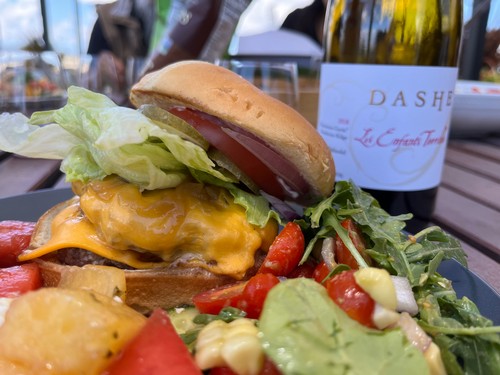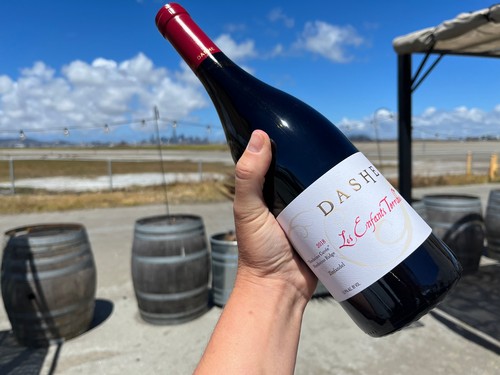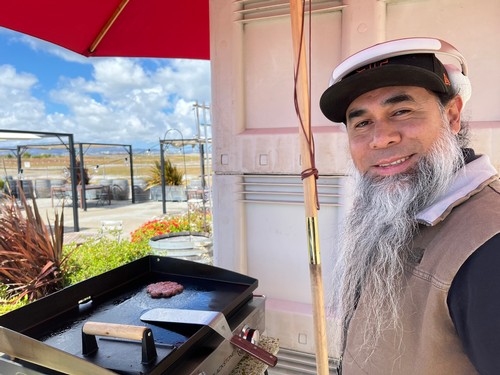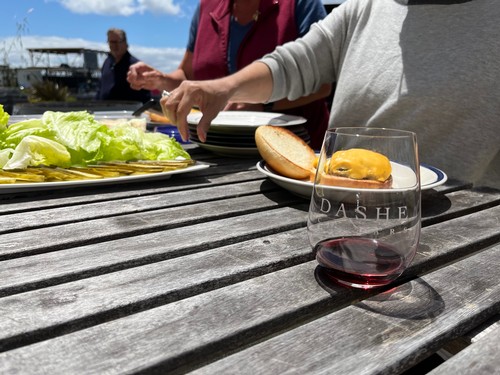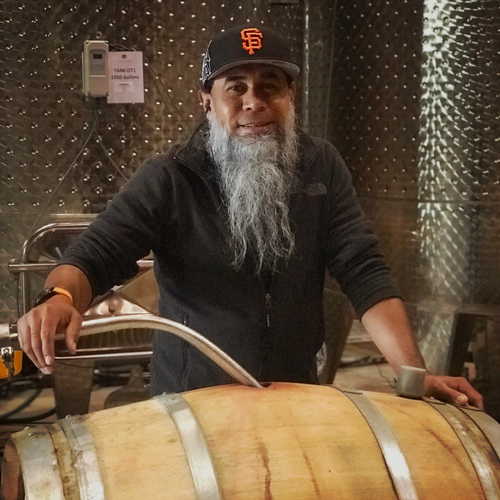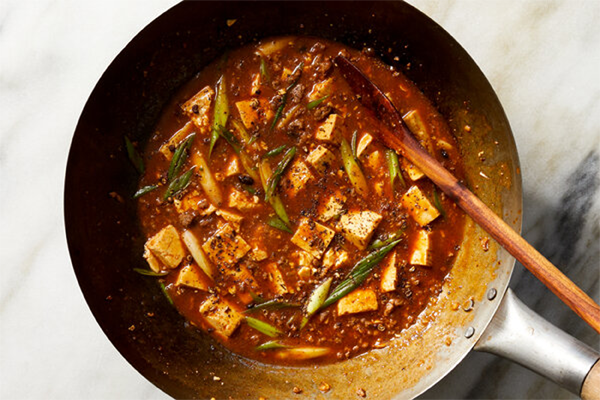The Dish @ Dashe
Fish Tales and Monkey Business from the Team at Dashe Cellars
 Mike Dashe Co-founder & Director of Winemaking
Mike Dashe Co-founder & Director of Winemaking
 Anne Dashe Co-founder
Anne Dashe Co-founder
 Rene Calderon Winemaker
Rene Calderon Winemaker
 Monica Chappell Wine Club Manager
Monica Chappell Wine Club Manager
RECIPE ALERT! Smash Burgers with the new 2018 Mendocino Cuvée Zinfandel
Fire up the Grill and Grab Your Wine Opener
Recently, our Winemaker, Rene, walked into the office and stated that it was officially Smash Burger Season. As someone who prides myself on eating all of the things, I was a little embarrassed to admit that I had never had one before and before I knew it the date was set... lunch on the SF City View Patio complete with homemade smash burgers, (doubles, with cheese) delicious watermelon salad, and a corn arugula salad that would knock your socks off.
Since we are the crew at Dashe Cellars, we couldn't let the chance pass to open some wine and make it a party. My dear readers, my world stopped when I had my first sip the 2018 Mendocino Cuvée Zinfandel paired with one of Rene's smash burgers. The bright fruit, and firm acidity cut right through the fattiness of the burger, and the notes of pepper and red fruits further accentuated the rich flavors in the burger.
It was heaven, and I highly recommend that you try it tonight.
The BA Smash Burger
By Adam Rapoport, Bon Appétit October 2015 issue - Smash Burger food pairing by Rene Calderon
(Rene's variation was topped with a caramelized onion marmalade. If you have some time on your hands and want to caramelize some onions, then I included the recipe for that too)
Ground chuck is a great all-purpose, buy-it-anywhere choice for burgers. But if you want to get ambitious and blend, say, chuck with ground short rib or brisket, we say go for it.
Makes 4 Servings
Ingredients
- Vegetable oil (for pan)
- 1 pound ground beef chuck (20% fat)Kosher salt
- 4 slices American cheese
- potato rolls, toasted
- Ketchup, mayonnaise, shredded iceberg lettuce, and dill pickle slices (for serving)
Preparation
Step 1
Heat a cast-iron griddle or large heavy skillet over medium-high until very hot, about 2 minutes, then lightly brush with vegetable oil. Divide ground beef into 4 equal portions (do not form patties).
Step 2
Working in batches if needed, place portions on griddle and smash flat with a spatula to form 4"-diameter patties (craggy edges are your friend). Season liberally with salt and cook, undisturbed, until outer edges are brown, about 2 minutes. Flip patties, season with salt, and place a slice of cheese on top of each patty. Cook until cheese droops and burgers are medium-rare, about 1 minute.
Step 3
Serve patties on rolls with ketchup, mayonnaise, lettuce, and pickles.
Click Here to go to the original recipe posted on bonappetit.com
2018 "Les Enfants Terribles" Zinfandel, Mendocino Cuvée
Color: Cherry red
Aroma: Raspberry, pomegranate, plum, and fresh earth, followed by hints of white pepper and minerals.
Taste: Raspberry, cranberry, and darker hints of black cherry and plum. Great acidity to balance the sweetness of the fruit, and a long, spicy red fruit finish
Click Here for the 2018 Zinfandel, Mendocino Cuvé
Rene's Caramelized Onion Marmalade
Ingredients
1 tablespoon olive oil
2 teaspoons brown sugar
6 large thinly sliced onions
Preparation
Start with a BIG pot! Your onions will take up a lot of room at first and you want to make sure to be able to fold them as they cook. Heat the olive oil and then add the onions, tossing to coat. Very important, instead of stirring the onions while they cook, you want to fold them from the outside of the pot in so that you keep the texture of the onions. Once the onions start to release their liquid, add the brown sugar and continue cooking until the onions are done to your liking (for me it's about 1.5 hours).
Anne Dashe on the Todd Brothers Ranch
The release of our 2018 Todd Brothers Ranch Zinfandel, celebrates 20 years of making wine from one of our favorite vineyards. We sat down with Anne Dashe to talk about this extraordinary piece of land in Geyserville.
Click Here to order the 2018 Zinfandel, Todd Brothers Ranch
Tasting with Rene | 2017 Sparkling Wine, Methode Ancestrale
A brand-new wine to Dashe Cellars, this ancestrale methode sparkling wine is otherwise known as a 'Pet Nat'. We've aged this wine in the bottle since 2017, long aging in the bottle alongside the native yeast contributes to its nutty, almost cider-like aromas and flavors. A perfect wine for pairing with strong cheeses and nuts, or simply enjoying a glass with friends!
Pour yourself a big glass of wine this Thanksgiving | a toast to you!
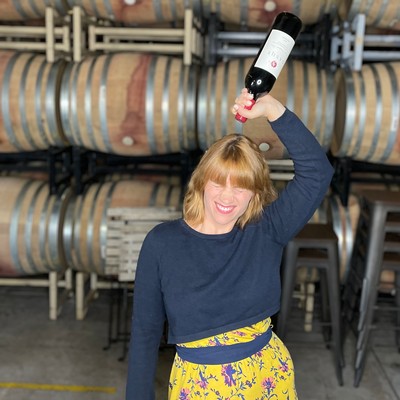
Every Thanksgiving, I lead my family through the exercise of putting the name to things that we are thankful for and talking about them around the table (some participate more willingly than others). I'm making my list for the big day, and there is so much that I have to be thankful for that it's a difficult list to condense.
When it comes to my Dashe Family, I am most thankful for you! Our friends, our Wine Club Members, our supporters, even if you've only been to the winery and had one glass of wine, you have helped to keep us going. For small businesses like ours, every glass and every bottle makes a difference.
This year, I'm grateful for the progress that we've made in getting operations at the winery closer to normal. We've been able to bring back all of our employees, we expanded service on our patio to accommodate covid-friendly seating, we are in the process of opening up our tasting room inside of the airplane hangar, and we had a harvest free of the worries of wildfires. I'm grateful for every single bit of it, every win and every celebratory glass of wine along the way.
And as you may or may not know, my husband and I gave birth to a beautiful baby boy earlier this year, Everett Flasher. I am so grateful that he is growing, healthy, and (mostly) sleeping through the night! Thank you for all of your supportive messages and tidbits of advice that I've received over the past few months.
... and pumpkin pie paired with Late Harvest Zinfandel, I'm definitely thankful for that!
With Gratitude,
Stephanie Flasher
DTC & Wine Club Manager
What are you grateful for this year?
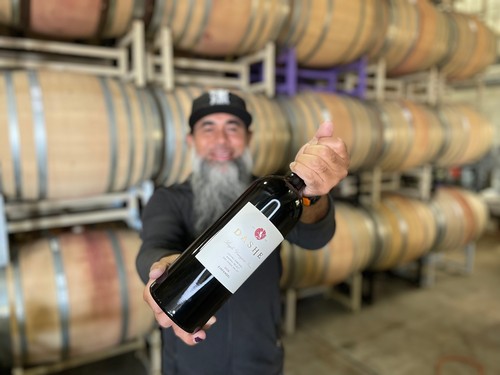
Rene Calderon | Winemaker
- That Harvest actually happened.
- My hardworking interns were willing to learn as much as possible.
- Grateful for the very large door at the crushpad, it made a hard day's work much more enjoyable!
Pam Maners | Tasting Room Manager
I am very grateful for joining the Dashe Family earlier this summer, I already have so much love for my fellow colleagues and just as importantly our guests! We have the best wine club members and a loyal following, everyone truly makes our jobs easier and fun to be here!
I am also grateful for the holidays this year, it's been a long while to be with family and friends and those I am the most grateful for...
and possibly pumpkin cheesecake and our 2018 Dry Riesling. Oh yeah!
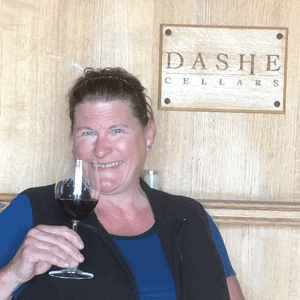



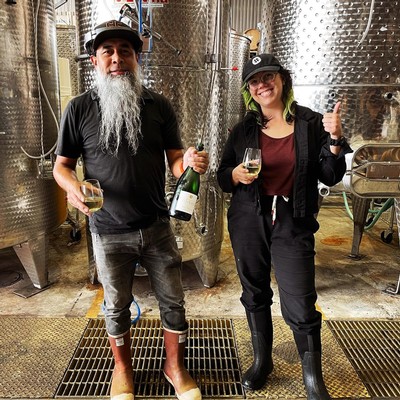
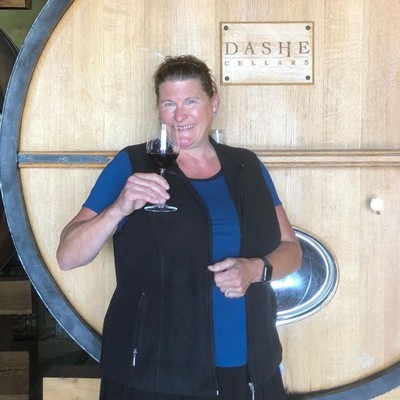
The 2021 Harvest in photos

Mike loading up bins to head up to Dry Creek
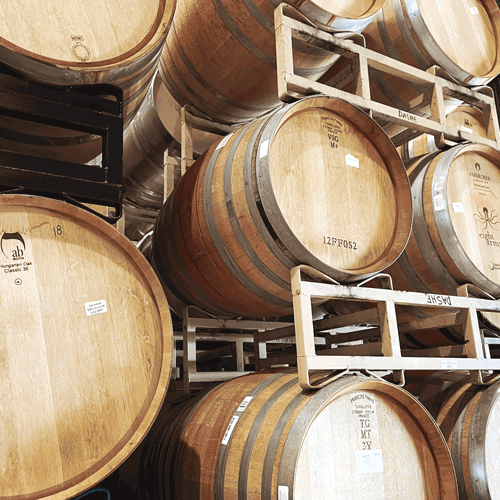
Cleaned and stacked and ready to be filled after bottling
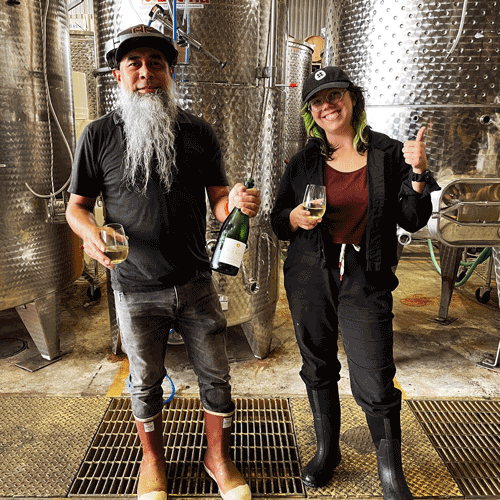
Rene and one of our harvest interns, Haley, toasting to the end of her first day in the cellar
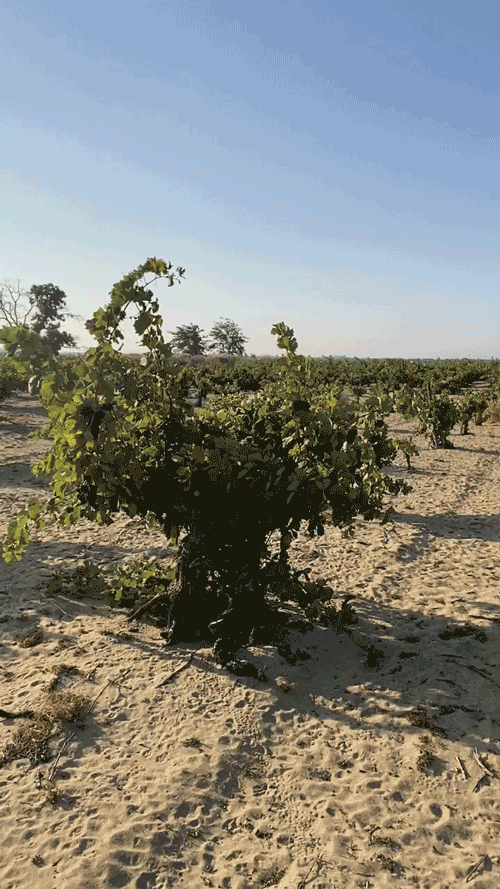
Old-Vine Carignane planted in the sandy earth

Bins as high as you can see
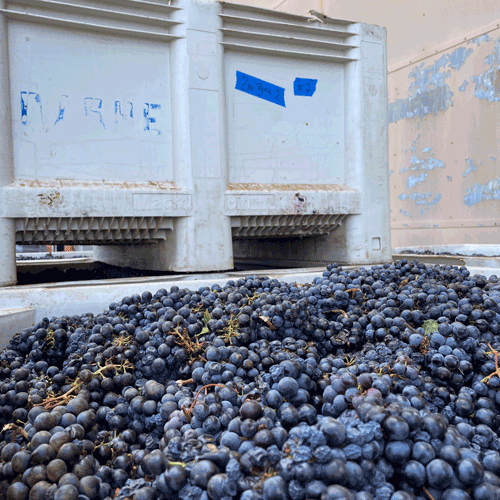
A gorgeous bin full of fruit from the Louvau Vineyard
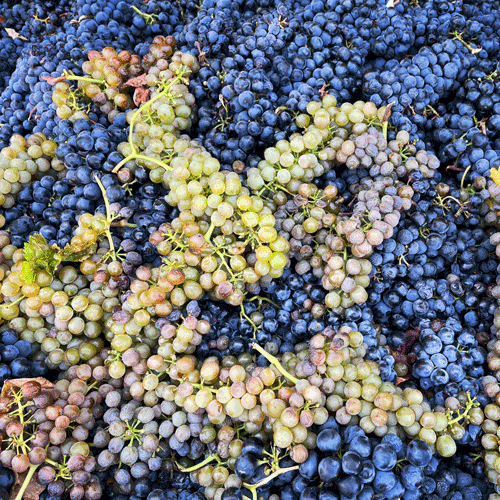
A field blend from the Pilsbury Vineyard, a brand-new partner us this vintage!

Our crushpad with a view

Rene's been logging some major miles in the forklift
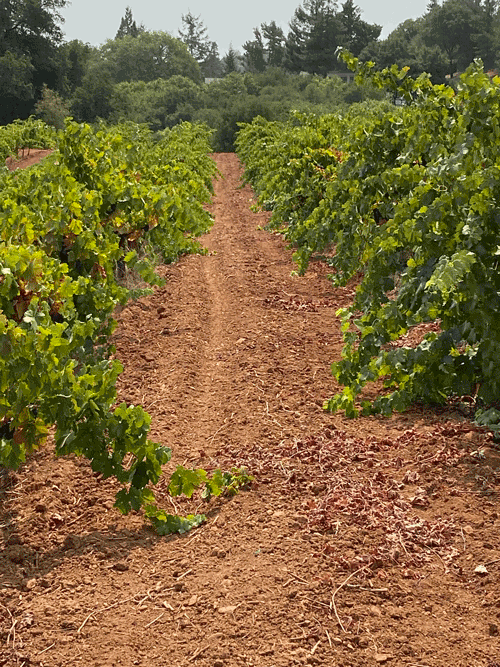
Can you guess where this is? Leave a comment below!
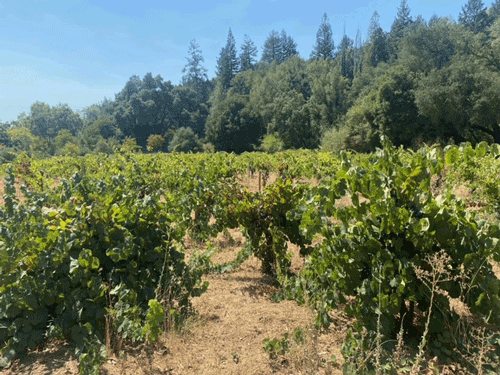
Crazy head-trained vines at the base of the foothills in Dry Creek
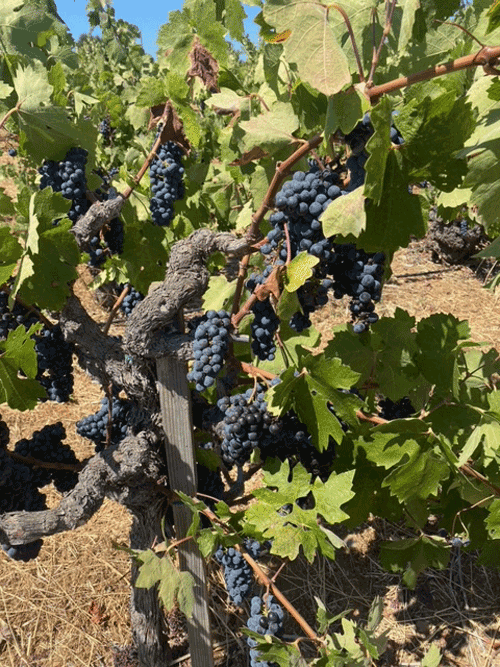
Before...
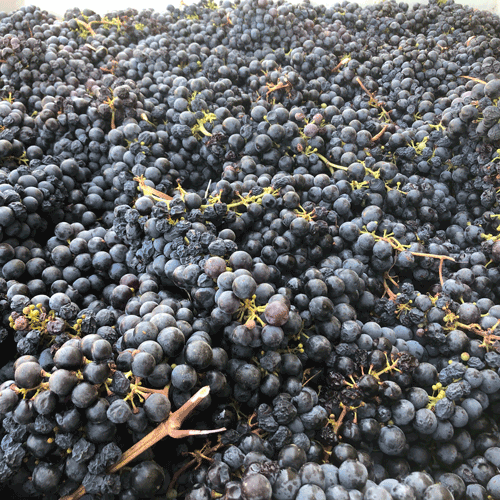
... and after!
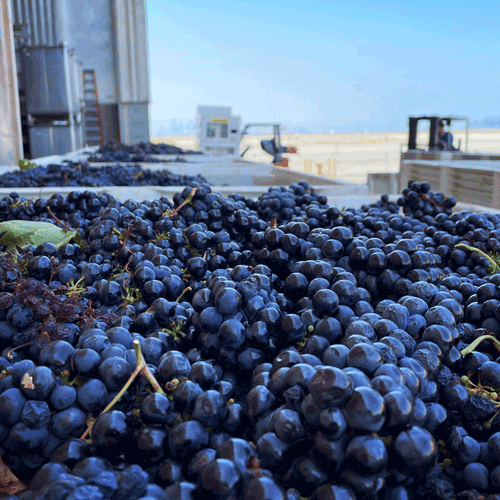
These grapes are ready for their close-up
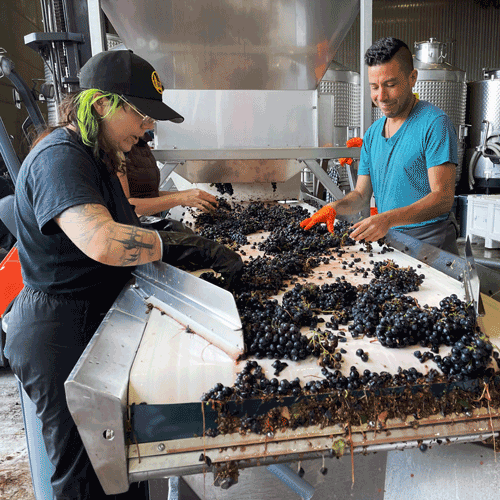
Haley, Anne, and Jose at the sorting table, making sure that only the best fruit makes it into tank
RECIPE ALERT! Comet paired with Pancetta Pot Pie
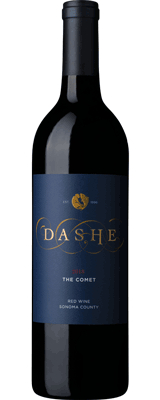
The perfect Zinfandel food pairing
The women in my family have a common addiction... we can sit around a kitchen table and flip through cookbooks for hours on end. Can you imagine how this was transformed for us when food blogging became popular? Over the years, I've discovered new favorite bloggers and explored new cuisines and pairings, specifically Zinfandel food pairing once I started working with Mike and Anne. But no matter how wide my internet roaming goes, I always come back to my favorite blog Smitten Kitchen. I've been making this pot pie recipe for years, and it's an amazing recipe. When paired with our 2018 'The Comet' though, it takes on an entirely new life. Please, before the spring comes, make this recipe & pop the cork on a bottle of Comet... You'll forget that spring training and summer sailing are still months away.
2018 'The Comet' Sonoma County
This wine is made of Petite Sirah and Zinfandel, blended with 130-year-old vine Carignane. The blend makes for a very complex, balanced, dark wine with a long, long finish. It’s a quintessential steak-house wine, made to go with food. It will last in the cellar for years!
Color: Reddish-purple
Aromas: Chocolate, black cherry, blackberry, followed by elements of toffee, vanilla, black pepper, and coffee
Taste: Extremely smooth and velvety entry, wine, with good acid balance, and silky tannins. The entry is of bright fruit—black cherry, blackberry, and pomegranate—and then a lush texture filled with fruit, cocoa powder, clove, and a spicy finish. The wine has a velvety mouthfeel and long finish.
Zinfandel food pairing: Asian 5 Spice Short Ribs, Grilled Venison with Berry Reduction, anything with Mole Poblano Sauce.
Click Here to buy the 2018 'The Comet' Sonoma County
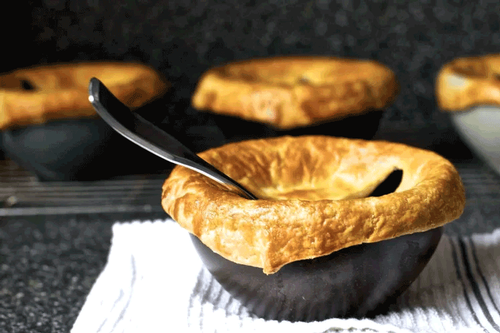
Pancetta, White Bean, and Chard Pot Pies
By Deb Perelman, from The Smitten Kitchen Cookbook - Zinfandel food pairing by Stephanie Flasher
The pancetta, while adding a lovely, smoky base, can be omitted to make this vegetarian. In fact, I went back and forth many, many times about removing it so that this could stay in the vegetarian section, but in the end, decided it easier I leave the choice to you. For a vegetarian version, simply skip the pancetta and cook your vegetables in 2 tablespoons olive oil instead of 1. You can replace the swiss chard with any green you have around, from a hearty spinach to kale, adjusting the cooking time accordingly to make sure it wilts a bit before going into the oven to finish cooking.
As you can see from the photos, I really don’t own soup crocks. I have debated the value of purchasing some many times of the years, but you must trust me when I say I don’t have room for a single extra dish I don’t already own in my life right now. Instead, I just use two-cup bowls we already have that are ovenproof. (When buying a dish set, I always look to see if they are ovenproof, as you never know when this will come in handy.) If you don’t have ovenproof soup bowls, you can always make a large version of this in a casserole dish with one big pastry .
Weekday night tip: Make a double batch of the stew and lids. Keep them separate and for two to three nights, you can ladle what you’d like into bowls, roll out lids and bake them to order.
Serves 4
Ingredients
Lid
- 2 cups (250 grams) all- purpose flour
- 1/2 teaspoon table salt
- 13 tablespoons (185 grams or 1 stick plus 5 tablespoons) cold unsalted butter, diced
- 6 tablespoons (90 grams) sour cream or whole Greek yogurt (i.e., a strained
- yogurt)
- 1 tablespoon (15 ml) white wine vinegar
- 1/4 cup (60 ml) ice water
- 1 egg, beaten with 1 tablespoon water, for egg wash
Filling
- 2 tablespoons (30 ml) olive oil
- 4 ounces (115 grams or 3/4 to 1 cup) 1/4-inch-diced pancetta
- 1 large or 2 small onions, finely chopped
- 1 large carrot, finely chopped
- 1 large stalk celery, finely chopped
- Pinch of red pepper flakes
- Salt and freshly ground black pepper
- 2 garlic cloves, minced
- Thinly sliced Swiss chard leaves from an 8- to 10-ounce (225- to 285-gram)
- bundle (4 cups); if leaves are very wide, you can halve them lengthwise
- 3 1/2 tablespoons (50 grams) butter
- 3 1/2 tablespoons (25 grams) all- purpose flour
- 3 1/2 cups (765 ml) sodium- free or low- sodium chicken or vegetable broth
- 2 cups white beans, cooked and drained, or from one and a third 15.5- ounce
- (440-gram) cans
Directions
Make lids:
In a large, wide bowl (preferably one that you can get your hands into), combine the fl our and salt. Add the butter and, using a pastry blender or your fingertips, cut them up and into the flour mixture until it resembles little pebbles. Keep breaking up the bits of butter until the texture is like uncooked couscous. In a small dish, whisk together the sour cream, vinegar, and water, and combine it with the butter-flour mixture. Using a flexible spatula, stir the wet and the dry together until a craggy dough forms. If needed, get your hands into the bowl to knead it a few times into one big ball. Pat it into a flattish ball, wrap it in plastic wrap, and chill it in the fridge for 1 hour or up to 2 days.
Make filling:
Heat 1 tablespoon olive oil over medium- high heat in a large, wide saucepan, and then add the pancetta. Brown the pancetta, turning it frequently, so that it colors and crisps on all sides; this takes about 10 minutes. Remove it with a slotted spoon, and drain it on paper towels before transferring to a medium bowl. Leave the heat on and the renderings in the pan. Add an additional tablespoon of olive oil if needed and heat it until it is shimmering. Add onions, carrot, celery, red pepper flakes, and a few pinches of salt, and cook over medium heat until the vegetables are softened and begin to take on color, about 7 to 8 minutes. Add the garlic, and cook for 1 minute more. Add the greens and cook until wilted, about 2 to 3 minutes. Season with the additional salt and freshly ground black pepper to taste. Transfer all of the cooked vegetables to the bowl with the pancetta, and set aside.
Make sauce:
Wipe out the large saucepan; don’t worry if any bits remain stuck to the bottom. Then melt the butter in the saucepan over medium- low heat. Add the flour, and stir with a whisk until combined. Continue cooking for 2 minutes, stirring the whole time, until it begins to take on a little color. Whisk in the broth, one ladleful at a time, mixing completely between additions. Once you’ve added one- third of the broth, you can begin to add the rest more quickly, two to three ladlefuls at a time; at this point you can scrape up any bits that were stuck to the bottom — they’ll add great flavor.
Note from Stephanie: to make this an even more perfect Zinfandel food pairing, sometimes I'll substitute a little broth for a splash of The Comet!
Once all of the broth is added, stirring the whole time, bring the mixture to a boil and reduce it to a simmer. Cook the sauce until it is thickened and gravylike, about 10 minutes. Season with salt and pepper. Stir the white beans and reserved vegetables into the sauce.
Preheat your oven to 375 degrees.
Assemble and cook pot pies:
Divide the filling between four ovenproof 2-cup bowls. (You’ll have about 1 1/2 cups filling in each.) Set the bowls on a baking pan. Divide the dough into four pieces, and roll it out into rounds that will cover your bowls with an overhang, or about 1 inch wider in diameter than your bowls. Whisk the egg wash and brush it lightly around the top rim of your bowls (to keep the lid glued on; nobody likes losing their lid!) and drape the pastry over each, pressing gently to adhere it. Brush the lids with egg wash, then cut decorative vents (smaller than mine, please, as they led to lots of draping) in each to help steam escape. Bake until crust is lightly bronzed and filling is bubbling, about 30 to 35 minutes.
Do ahead:
The dough, wrapped twice in plastic wrap and slipped into a freezer bag, will keep for up to 2 days in the fridge, and for a couple months in the freezer. The filling can be made up to a day in advance and stored in a covered container in the fridge.
Click Here to go to the original recipe posting on www.smittenkitchen.com
Enjoy!
If you haven't already, open up that bottle of 2018 'The Comet' and enjoy an absolutely stellar Zinfandel food pairing! I know what I'm going to be making tonight.
Interview with Winemaker Rene Calderon
Rene Calderon sat down with our DTC Manager, Stephanie Sawyer over a glass of wine recently (2017 Petite Sirah from the Todd Brothers Vineyard, one of Rene's favorites!). They talked about everything from his life transitioning from Mexico to Napa, California to building a career in winemaking. Toward the end of the bottle, they even started talking superpowers... enjoy the fruits of their hard work!
You have had quite an adventurous life! Starting in Mexico as a Philosopher and moving on to being a Winemaker in California. Can you tell me a little bit about your professional journey to get to this point, some of the steps that you've had on the way, and what inspired you to get into Winemaking?
Well sure, I landed in Napa from Mexico in 1996. It’s funny to me now that 1996 was the year that Dashe Cellars was founded and in that same year I arrived in Napa from Mexico. In Napa, there are two things that you do: you work in wine or you work with wine. I wanted to work with wine, in the production side of the business. I started working with Franciscan on the bottling line in the beginning of 1997. I worked on the bottling line for a couple of months and started moving up pretty quickly. In the nineties, there were a lot of production jobs available, so there was a lot of opportunity for growth. 1997 was my very first harvest working in the cellar; it was pretty easy work at the time. Digging out tanks, pumpovers, super-easy jobs, the very first jobs that they get you to do. You get a pump, you know how to use a pump, then do a pumpover and repeat it one hundred times. I loved the cellar, I loved the work and I still do. Once you learn how to do a lot of things, the work is very independent. I worked for Franciscan for about three years before moving on. Franciscan in a very large Winery, about half a million cases. At that point, I wanted to do more fancy, hands-on winemaking with a smaller producer. The winery that I moved to was Stags Leap Winery and they were making about 50,000 cases at that point.
I wanted to figure out if I really wanted to go back to school. In Mexico, I was studying to be a Philosopher, so I wanted to figure out if I was going to go back into this area of study and teach or if I wanted to do something else. Stags Leap was very small, the cellar crew was only five of us, plus the Winemaker and Enologist, I really liked working there. I really enjoyed working closely with the Winemaking staff, there was direct access to them. They oversaw all the work so I was able to see how they made decisions, how they worked with the wine, and they started to explain to me why things were important. This was a big influence on why I decided to go back to school and study Winemaking.
Spanish is my native language, so to dive deeper into the material I started with improving my confidence in English. My first ESL class was in 2003 at Napa Valley College and I transferred shortly to Oakland, I always wanted to live in Oakland. I love living in the city and I missed it when I was in Napa. I gained my transfer to UC Davis in 2008 and graduated 2010 with a bachelor’s degree in Viticulture and Enology. I had worked in the cellar for ten years before taking time off to finish my degree full time, the only vintages that I missed were 2007, 2008, and 2009.
After graduation, I started with Wente Vineyards in Livermore for the 2010 vintage. I ended up working at Wente because I still was living in Oakland and wanted to stick around. Wente offered me a position in the laboratory, which was something I had never done before; it was winemaking by the numbers. I was out of the cellar and it was completely analytical, I enjoyed being able to bring my knowledge of the cellar into the lab without the context, with just the numbers. That helped me to put a lot of the theory that I had learned into practice. I was with them for three years and became the Assistant Winemaker for Dashe in 2013. My first vintage as Winemaker for Dashe was in 2018. When I was in Napa, I wanted to work with the best people in Napa. When I moved my career to Oakland, that’s what I applied myself to do, I wanted to find the best people to work for. By the time that this position with Dashe Cellars opened, I had already been trying to make myself the most qualified person for the job. I knew about Mike and his connection to Ridge, and I knew that if there would ever be a position working with him that I needed to be prepared for it. I don’t just want to make good wine, I want to make the best wine.
For me it’s never been about the romance of the industry, it’s about the labor of it. I LOVE wine, I really enjoy it. And drinking lots it of course, but that came after my love of making it.
As Winemaker, you are given more freedom to be able to influence the final wines. How would you best describe your styles of winemaking?
First, I would like to talk about the difference between being an Assistant Winemaker versus being a Winemaker. As the Assistant, you are learning the techniques through the Winemaker, through listening about what they are looking to produce and how the achieve it. You work on the given project throughout the year and you follow the instructions. Once you learn enough, your own experience leads you to knowing how to get to the end result. As Winemaker, I have the experience to be able to do that, and this comes with responsibility and the trust that you gain working directly with the Winemaker. I’m still learning, you never stop learning and every vintage is different.
With regards to my style of winemaking, I would say that I make clean wines. To me, clean means no defects, sparkle, bright colors that you are only able to get with a lot of labor. Prior to Dashe, I came from more industrial winemaking, so working in the cellar with Mike and Anne and learning their process of non-intervention winemaking was eye opening. What you do in the cellar is very important to the final result. The fruit gives you the aromas, and the process in the cellar gives you the bouquet. Everything from the fermentation, the barrel selection, to the rackings and more. The aromas that natural fermentation brings with the yeast from the vineyard work really well without manipulation. I enjoy bringing together my knowledge from both sides of the industry, the industrial side and the non-interventionist side, in order to make the best wine possible.
With Dashe, I’ve been able to work with the different vineyards and showcase these places that all create wines that taste very different. When you can taste the difference between one vineyard and another, that is the sense of place, the terroir. That is what the vineyard gives and with Dashe I’ve been able to work on this more, on how to respect the place. You can't learn about this stuff unless you work closely under a Winemaker for a couple of years.
What wines stand out in your memory as the most influential to your work?
I love California wines. I like to study California wines because I work to make sure that I have the tools to be able to improve what we have access to here. I like Monterey Pinot; I like Napa Cab; I love Merlot: it’s one of my favorite grapes. Working in Napa, I was able to taste some of the best Merlots. The best wine that I’ve ever had was 2003 Shafer Merlot. I was at Stags Leap at the time and since we were neighbors, I traded bottles with them and was able to taste it right off the line.
I always look forward to seeing what delicious things that you’ve brought for lunch, it seems like you have an eclectic palate. Is there a cuisine or a style of cooking that you are especially passionate about?
I like eating a lot. If I was to pick a specific type of restaurant, I would have to give it some thought. I like sauces as well as super spicy food with crunch. Szechuan and obviously Mexican food, especially when it comes to meats. One of the things that I enjoy so much about Szechuan cuisine is that it’s so alien to me. I didn’t grow up cooking it or with any of the spices around. Every time that I taste it, there is something different and I like the experience of it learning about these flavors. I am always adding something new to the flavor library that I am building in my head. When it comes to the wine, there is always a wine to pair with Szechuan as well. For something that is really spicy, I would probably pair it with a wine that is jammier, something with high pH. I like to pair overwhelming flavors in food with big flavors in wine, something spicy with a chewy wine. Every new Szechwan dish I taste is amazing. Mexican food is similar in that aspect, each region has a different style. But in all truth, I eat whatever is in front of me.
I’ve been thinking a lot lately about different experiences of taste such as umami and spicy. When I say spicy, I mean the type of spice that you get in Mexican chilies. A secret of mine is that growing up, and even sometimes as an adult, I could drink an entire bottle of Valentina hot sauce. There is something about the acidity and spiciness of it, I will eat chips just to eat that salsa. I’m addicted to the sensation of it. It’s very similar to Szechuan mala, the scalding sensation that causes you to not be able to feel your mouth. I’m fascinated with the whole idea. The wasabi, mala, and chilis. These are all different forms of the experience of spice. It’s not about the aromatics or flavor, it’s about the physicality of taste. That’s what I really love about Petite Sirah, it’s the physicality of drinking. With this varietal and with other big wines, you really must tongue the wine, you have to slush your mouth around. I wish there were a wine that was really that profound in its aromatic profile, but for me it's all about the texture.
Do you have any advice for those that are looking to get into the production side of the industry?
Production is tough. There is a place for everybody in production, but make sure that you can work for 12 hours in a row. You’ll be wet, cold, and shoveling tanks out, but if you enjoy the idea of it then go for it. Production is not fun, but it is very satisfying. I like what I do a lot because it is very physical, it’s not romantic work but it is very rewarding work. To someone looking to get into wine production, I would tell them not to become enamored with the romance of it, instead look at what is actually means to work in the cellar. You have to really like the physicality of it, that’s what I really enjoy about the cellar. (interviewers note: I’m starting to realize why Rene has denied me a harvest internship for the past 3 vintages.) For someone starting out, I would recommend to work one harvest and if you enjoy it then stick with it.
What do you do when you aren’t working?
A lot! I enjoy reading comics and I spend a lot of time listening to audiobooks while I’m working. I go through probably 10 audiobooks between January and May, simply because it’s quieter in the cellar during that time. I like stories and hearing what people have to say, specifically fiction and high fantasy. Right now, I’m listening to Frankenstein, next I’ll move on the newest short stories by Stephen King. I spend a lot of my time in the music scene too, I go to a lot of heavy rock and roll shows. The funny thing about me? I like eating, I don’t cook. I love comics, I don’t draw. I love music, I don’t play. But I enjoy things for what they are, I like the creation. That’s why I’m so passionate about the winemaking, because I want to make sure that I can provide that kind of experience to the people who like to drink wine.
If you were to choose one superpower, what would it be?
Oh, I know this one, I’ve known it for a while. I would like the power of telekinesis. I would grab stuff from far away. Beer, come! Wine, come! Remote control, come! TV, on! Volume, down! I would get so much more done if I had this power.
RECIPE ALERT! Food & Wine Magazine Thanksgiving Selection
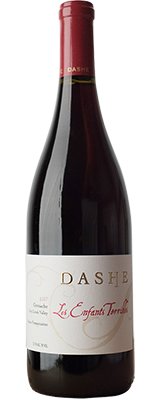
Food & Wine Magazine Recommended Pairing
How excited was I to open up one of my favorite foodie magazines and find a beautiful recipe for a Thanksgiving feast, all the sides and fixin's included? Even better, the author, Rodney Scott, selected Dashe Grenache as the perfect pairing to go with the turkey! I've always known that our 'les enfants terribles' wines are the perfect food pairing wine, but here is a professional recipe writer weighing in.
A New Kind of Thanksgiving
I don't know about you, but this year I'm not going to have the usual family get-together. There's no traveling to Idaho to see my parents and brother, no dinner with my husband's family, no uncles razzing me about the year that I hosted Thanksgiving and insisted that everyone where pilgrims hats for the pictures. It's going to be different.
So my new husband and I aren't going to make my mom's patented turkey stuffing, there will be no grandma's pecan pie at the dessert table, and those mashed potatoes that I love so much will be nowhere in sight. Instead, we'll be making our own Thanksgiving with our social bubble, with new recipes to go along with this new form of holiday. And you better believe that this turkey will be right there front and center next to a bottle of Dashe Cellars 'les enfants terrible' Grenache!
2017 'les enfants terribles' Grenache
A beautiful wine that offers bright, lively fruit with a great structure and balance. This Grenache is made in almost a Grand Cru Beaujolais style that offers a velvety texture with aromas of wild strawberry and flavors of strawberries and raspberries and a finish of minerals and peppery spice.
Color: Pale Red
Aromas: Wild strawberry, pomegranate, spice, minerals
Taste: Beautiful velvety texture. Entry of intense strawberry, raspberry, and pomegranate fruit. Beautiful floral elements of lavender and violets, long, sweet finish of red fruit, minerals and peppery spice.
Click Here to buy the 2017 'les enfants terribles' Grenache
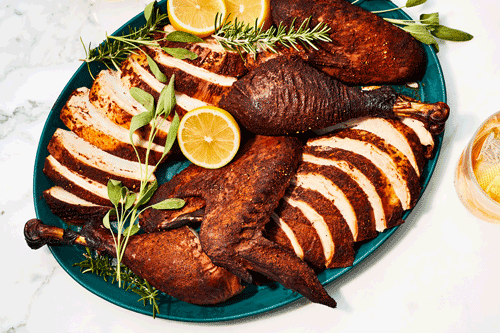
Spatchcocked Smoked Turkey
By Rodney Scott Food & Wine Issue November 2020
Sweet, tangy, and succulent thanks to Rodney Scott’s smoky dry rub and spicy mopping sauce, this turkey is easy to tackle on a kamado-style cooker. While Scott swears by the thermal qualities of a ceramic grill, this turkey also can be cooked in a kettle grill or smoker (or even the oven!) at 225°F.
Ingredients
- 1/4 cup kosher salt
- 2 tablespoons black pepper
- 2 tablespoons paprika
- 2 tablespoons chili powder
- 2 tablespoons light brown sugar
- 1 teaspoon garlic powder
- 1 teaspoon onion powder
- 1/4 teaspoon cayenne pepper
- 3 3/4 cups white vinegar
- 1/2 cup packed light brown sugar
- 1/4 cup cayenne pepper
- 2 tablespoons black pepper
- 1 tablespoon fresh lemon juice
- 2 teaspoons crushed red pepper
- 1 (12- to 14-pound) whole Butterball turkey, thawed if frozen, giblets removed
Directions
Make the dry rub
Step 1
Stir together all dry rub ingredients in a bowl; set aside.
Make the vinegar-cayenne mopping sauce
Step 2
Whisk together all vinegar-cayenne mopping sauce ingredients in a large bowl; set aside.
Smoke the turkey
Step 3
Pat turkey dry with paper towels, and place turkey, breast side up, on a large cutting board. Using a chef’s knife, carefully cut turkey breast in half lengthwise, cutting straight through breastbone. Open up turkey, and press to flatten; pat inside dry with paper towels. Sprinkling from about 12 inches above work surface, coat turkey on all sides with dry rub; do not rub in seasoning. Place turkey, skin side up, on a rimmed baking sheet. Let stand at room temperature while grill preheats, up to 2 hours.
Step 4
Prepare a charcoal fire in a grill or smoker according to manufacturer’s instructions. Place oak wood chunks on coals, and fit grill with an aluminum foil–lined diffuser, such as convEGGtor. Maintain internal temperature at 225°F for 15 to 20 minutes. Smoke turkey, skin side up, covered with lid, until meat around ends of drumsticks pulls back and reveals the turkey’s “socks” and a thermometer inserted in thickest part of breast registers 145°F, about 2 hours.
Step 5
Generously mop 1 1/2 cups mopping sauce on skin side of turkey. Using long tongs and reaching as far under the bird as possible, carefully flip turkey skin side down. (Underside of turkey should be dark mahogany brown and evenly speckled with charred bits.) Generously mop with remaining 21/2 cups sauce. When sauce begins to pool in cavity, insert tip of tongs into exposed breast meat and gently twist to allow sauce to soak into meat. Continue to mop until all of sauce is absorbed. Close grill, and smoke until skin side is lightly charred and a thermometer inserted in thickest part of breast registers 155°F, 30 to 45 minutes. Transfer turkey to a large cutting board; carve immediately, or let rest up to 2 hours.
Make Ahead
Dry rub and mopping sauce can be made up to 1 week ahead and stored in airtight containers.
Suggested Pairing
Berry-scented Grenache:2017 Dashe 'les enfants terribles'*
Click Here to go to original recipe posting on www.foodandwine.com.
*pairing listed in print version, but not online
RECIPE ALERT! Mapo Tofu paired with 2017 Petite Sirah, Louvau Vineyard
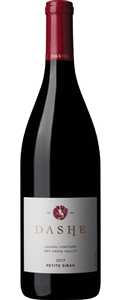
When Rene and I sit (at different tables, 10 feet apart) down for lunch, there is a notable difference in what we've brought. Me, being a quintessential CA girl, often has some combination of avocado, squash, and quinoa. Rene, on the other hand, always has the most interesting combinations of cultures and flavors on his plate. From seafood-filled sashimi plates to Oaxacan tacos, and everything in between... it's an inspiration to me. So when Rene started talking about his inspiration for his upcoming blog, "Are Wines Spicy" he got my inner foodie thinking about mixing things up in my kitchen at home.
Click Here to read Rene's blog, "Are Wines Spicy"
Like clockwork, the very next morning in my newsfeed was the NY Times recipe for Mapo Tofu!! It took a little creativity in sourcing the ingredients, but it's so very much worth the effort. Try it out this weekend and don't forget the wine!
Click Here to buy the 2017 Petite Sirah, Louvau Vineyard.
Mapo Tofu
By Andrea Nguyen
You can order mapo tofu from many Chinese restaurants, but it’s also quite doable at home. You can find the pivotal fermented chile and broad (fava) bean sauce or paste called doubanjiang (sometimes rendered as “toban djan”) at a Chinese market. Look for a doubanjiang from Pixian, in Sichuan, and bear in mind that oilier versions have extra heat but may lack an earthy depth. Sichuan peppercorns add mala — tingly zing — and fermented black beans, called douchi, lend this dish a kick of umami. Ground beef is traditional, but many cooks choose pork; you can also try lamb, turkey thigh or a plant-based meat alternatives. Add chile flakes for extra fire, and balance mapo’s intensity with rice and steamed or stir-fried broccoli.
YIELD 4 servings (about 4 cups)
TIME 30 minutes
INGREDIENTS
- 16 ounces medium or medium-firm tofu (if unavailable, go with firm)
- 1 rounded teaspoon Sichuan peppercorns
- 3 tablespoons canola oil
- 6 ounces ground beef or pork (preferably 80 or 85 percent lean), roughly chopped to loosen
- 2 ½ to 3 tablespoons doubanjiang (fermented chile bean sauce or paste)
- 1 tablespoon douchi (fermented black beans, optional)
- 1 teaspoon minced fresh ginger
- ½ teaspoon red-pepper flakes (optional)
- 2 teaspoons regular soy sauce
- 1 rounded teaspoon granulated sugar, plus more if needed
- Fine sea salt
- 2 large scallions, trimmed and cut on a sharp bias into thin, 2-inch-long pieces
- 1 ½ tablespoons cornstarch dissolved in 3 tablespoons water
- Cooked white rice, for serving
PREPARATION
- Prepare the tofu: Cut the tofu into 3/4-inch cubes and put into a bowl. Bring a kettle of water to a rolling boil. Turn off the heat and when the boiling subsides, pour hot water over the tofu to cover. Set aside for 15 minutes.
- Meanwhile, in a large (14-inch) wok or (12-inch) skillet over medium heat, toast the peppercorns for 2 to 3 minutes, until super fragrant and slightly darkened. (A wisp of smoke is normal.) Let cool briefly, then pound with a mortar and pestle, or pulse in a spice grinder.
- Set a strainer over a measuring cup, then add the tofu to drain; reserve 1 1/2 cups of the soaking water, discarding the rest. Set the tofu and reserved soaking water near the stove with the peppercorns and other prepped ingredients for swift cooking.
- Reheat the wok or skillet over high. When hot — you can flick water in and it should sizzle and evaporate within seconds — swirl in the oil to evenly coat, then add the meat. Stir and mash into cooked and crumbly pieces, 1 to 2 minutes.
- Add 2 1/2 tablespoons doubanjiang, the douchi (if using), ginger and red-pepper flakes (if using). Cook about 2 minutes longer, stirring constantly, until things are vivid reddish brown. Add the soy sauce and sugar, stir to combine, then add the tofu. Gently stir or shake the pan to combine the ingredients without breaking up the tofu much.
- Add the reserved 1 1/2 cups soaking water, bring to a vigorous simmer, and cook for about 3 minutes, agitating the pan occasionally, to let the tofu absorb the flavors of the sauce.
- Slightly lower the heat and taste the sauce. If needed, add the remaining 1/2 tablespoon of doubanjiang for heat, a pinch of salt for savoriness, or a sprinkle of sugar to tame heat.
- Add the scallions and stir to combine. Stir in the cornstarch slurry, then stir in enough to the mapo tofu to thicken to a soupy rather than a gravy-like finish. Sprinkle in the ground peppercorns, give the mixture one last stir to incorporate, then transfer to a shallow bowl. Serve immediately with lots of hot rice.
Click Here to go to the original recipe posting on cooking.nytimes.com.

